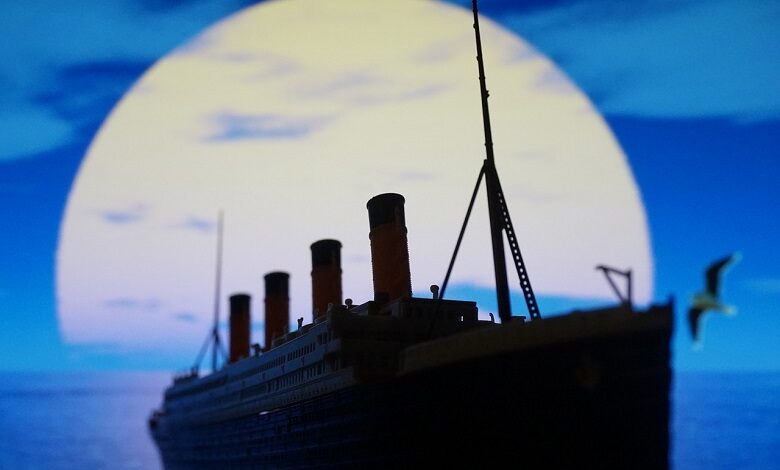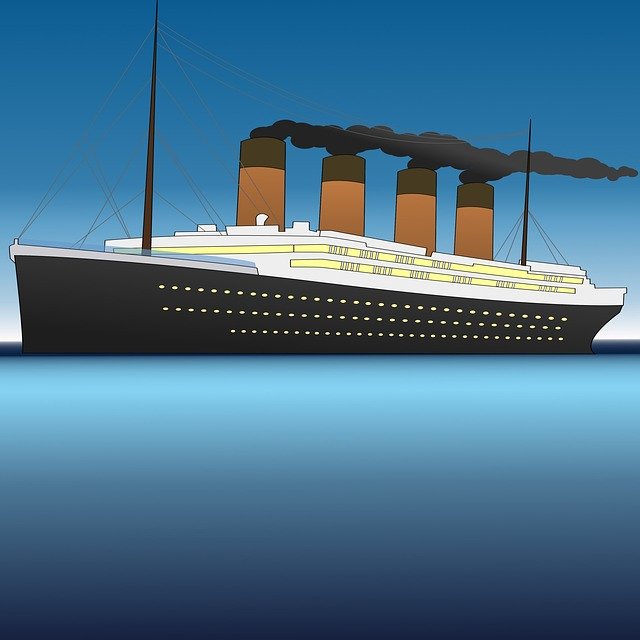Secrets behind “Titanic”: hidden reasons for the strange behaviors

When the Titanic disappeared under the dark, icy waters of the North Atlantic in the early morning of April 15, 1912, it left many mysteries behind.
Even now, many questions are raised by the bizarre behavior of passengers and crew—so many people on board and no panic. At first, everyone was calm; nevertheless, more than 1,500 of them had a few hours to live.
Where was the captain of the Titanic during the tragedy?
No one knows where Captain Smith was at 11:40 pm on Sunday, April 14, 1912. Surviving crew members and other witnesses say he appeared on the Titanic’s bridge just a couple of minutes later after hitting an iceberg. Smith tried to find out from the crew what it was. “Iceberg, sir,” Officer William Murdoch replied.
Thus began the worst night in Edward John Smith’s wonderful long life.
The captain spent over forty years at sea. During this time, no particular troubles happened to him. Now he bears the heavy responsibility for one of the worst naval disasters of all time. More than 1,500 passengers and cabin crew members will die in a matter of hours, including Smith himself.
The captain’s body never finds. The last moments of his life remained a mystery, despite numerous conflicting reports. There was even a version that he jumped off the ship with the baby. As Wyn Wade wrote in Titanic: The End of a Dream, “Captain Smith died at least five times, sometimes heroically and sometimes shamefully.” There were even rumors that he survived at all.
The earliest newspaper articles cited eyewitness accounts that the captain had shot himself with a pistol. Historians categorically reject this version. Surviving radio operator Harold Bride, a more reliable witness, said he saw Smith “jump off the ship into the sea.” Others noted that he was swept away by the wave or sailed back to the Titanic to meet his end.
Several people said they saw the captain in the water. A Titanic firefighter, Harry Senior, said that Smith jumped off the ship with “a baby he held tenderly to his chest.” Then the captain allegedly swam to the nearest lifeboat, handed over the child, and swam back to the Titanic, saying: “I will follow the ship.” Still, others claimed that he made it to the overturned lifeboat but could not resist and drowned.
But was he dead?
Quite strange are the rumors that Captain Smith managed to survive. For example, sometime after the disaster, in the summer of the same year, a resident of Baltimore named Peter Pryal reported that he had met the captain in his city. Pryal was not crazy. He was a highly respected local businessman. He said that he happened to serve under Smith several decades ago. Therefore, he would have recognized him under any circumstances, no matter how his appearance changed. In addition, Prayal’s physician testified that he was “absolutely sane and did not suffer from hallucinations.”
Peter said he saw Smith twice. Once on Wednesday and again next Saturday. Prayal even walked up to him and talked. He supposedly recognized him and said that he was on a business trip. The former sailor followed Smith to the train station. He boarded the train to Washington and told Prayal, “Behave yourself, sailor, until we meet again.”

The following message about the alleged surviving captain followed in 1940. Life magazine published a letter stating that the captain had ended his days as an outcast in Lima, Ohio. The locals knew him as “Silent Smith.” Among the evidence indicated that this man arrived in the city three years after the disaster. He called himself Smith and was about the same age and height and had tattoos typical of sailors. But, the editorial board of the magazine did not know the main thing. Silent Smith, immediately after he died in 1915, was identified as a confident Michael McKenna.
Captain Smith’s verdict
Immediately after the disaster, the newspapers called Smith a hero, a brave captain who died along with his ship. The villain was J. Bruce Ismay, the head of the White Star. He escaped in one of the lifeboats. Ismay accused of pushing Smith to maintain an excessive speed.
In the course of the British and American investigations that followed, a more complex picture emerged. Smith accuses ignoring ice warnings from other ships and failing to reduce the ship’s speed to appropriate conditions.
The British investigation acquitted the captain, stating that he had not done what the other captains had not done. The American analysis was only slightly harsher. Michigan Senator William Alden Smith, who chaired the Senate Investigative Committee, said that “Captain Smith’s indifference to danger was one of the direct causes of this unnecessary tragedy.” But the senator also paid tribute to him for his “courageous behavior and gentle concern for the safety of women and young children,” as well as his “willingness to die.”
Why there was no panic at first
The fact is that people did not realize the full depth of the danger. When they were first called on deck around midnight on that clear, cloudless night, no one had any idea how it would end up. No one knew, for example, that the lifeboats were about half the size of what they needed. Or that a ship seen in the distance will not come to the rescue. Or that such a famous, giant ship would sink.
Indeed, when lifeboats became scarce, there was some panic. Then the ship began to roll noticeably, and everything that did not nail to the floor turned into a high-speed projectile. But even despite this, there was no panic in the complete sense of the word even then. Popular films and other reenactments of the disaster show occasional chaos and cowardice, but most survivors tell a very different story.

“There was no excitement, no panic, and no one looked particularly frightened,” first-class passenger Eloise Smith said at a hearing in the US Senate about the disaster. “I didn’t have the slightest suspicion about the shortage of lifeboats; otherwise, I would never have been away from my hubby.”
“I looked the boats on the starboard side as they filled and lowered sequentially,” said Doctor Washington Dodge. During this period, there was no panic, no signs of fear, no unusual anxiety. I have not seen women or children cry. There was no evidence of hysteria.
Even the survivors who stayed on the Titanic after the last lifeboats sailed and soon found themselves in the icy water do not talk about hysteria or panic. Charles Lightoller, the highest-ranking member of the crew of the survivors, was responsible for loading the lifeboats on the port side. He said, “There was no crush or hustle.” “All men behaved politely towards women and children. They could not have been quieter even if they were in church.”
Disaster in slow motion
The calm, unhurried pace at which events unfolded in the last hours of the Titanic may provide a clue. The ship touched the fatal iceberg at 23:40 on April 14, and a series of holes formed below the waterline. Many of the passengers were in bed at the time, and the few survivors said they hadn’t noticed anything special. It was only when the stewards began to wake the passengers, inviting them to get dressed and go on deck, that it became for people the first hint that something was wrong.

Only at 00:05, the crew members began to open the lifeboats. Another 40 minutes passed before the first of them was launched. At the same time, the crew began to launch rockets. People who travel often would consider this a severe distress signal, but less experienced people did not notice anything out of the ordinary. The crew continued to load passengers into the lifeboats until the last of them launched at 2:05. Fifteen minutes later, the Titanic disappeared into the depths.
Until the very end, people did not believe that what was happening was very serious. Maybe it seemed to them that this could not be true? After all, the Titanic was called unsinkable. Some defensive reaction? The Titanic went down till now the largest maritime disaster in peacetime. This tragedy continues to excite the consciousness of people. This topic constantly inspires new research, writing books, making films, plays, and even musicals.




